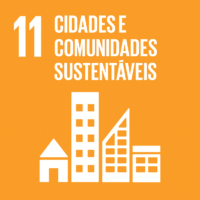Ciência_Iscte
Publicações
Descrição Detalhada da Publicação
“Urbanistic Architecture” according to Raul Lino. Visions of the Portuguese city in the first half of the 20th century (1900-1948)
Título Revista
Enquiry The ARCC Journal for Architectural Research
Ano (publicação definitiva)
2020
Língua
Inglês
País
Estados Unidos da América
Mais Informação
Web of Science®
Scopus
Google Scholar
Esta publicação não está indexada no Overton
Abstract/Resumo
Over a period of nearly one hundred years, Raul Lino (1879-1974) experienced the profound political, social and economic changes that marked the twentieth century in Portugal. Having been born during the Constitutional Monarchy (1822-1910), he lived through the First Republic (1910-1926), the Military Dictatorship (1926-1933), the Second Republic, or Estado Novo (New State, 1933-1974), and died shortly after the Carnation Revolution of 25 April 1974, at the dawning of the Third Republic. He was an architect who published prolifically in Portugal, having become known through his advocacy of the Campanha da casa Portuguesa (Portuguese House Campaign), which provoked a great deal of controversy. The debate peaked with the Polémica da casa Portuguesa (Polemic of the Portuguese house) at the Calouste Gulbenkian Foundation in 1970, after the inauguration of the retrospective exhibition on Raul Lino. He is less known for the quality of his transversal synthesis conceived between urbanism, architecture, the decorative arts, and its underlying affirmation of an idea of the city, which we conjecture from our analysis of his narrative. This analysis concentrates on eleven case studies that encompasses architectural projects, urbanistic plans and technical advice limited to the first half of the 20th century. The broad, cross-disciplinary position of Lino was defended in the same year as the First National Architecture Congress (1948), whose proposals ratified in Portugal the orthodoxy principles of modern architecture and urban planning for the new universal man-type, established in 1933 by the International Congresses of Modern Architecture (CIAM). Quoting Aristotle, Raul Lino conceived the city as the locus of happiness, shaping forms of consensus between tradition and modernity by means of an architecture at the scale of man and in proportion to his circumstance, consistently outlining a modern possibility of continuity.
Agradecimentos/Acknowledgements
I would like to thank Paulo Tormenta Pinto, Rui Jorge Garcia Ramos and Raquel Henriques da Silva for the recognition and encouragement, to several colleagues, all of the reviewers envolved and the editor of ENQ for their precious contributions. Also in vi
Palavras-chave
Raul Lino,Architecture,City,Circumstance,Continuity
Classificação Fields of Science and Technology
- Artes - Humanidades
Contribuições para os Objetivos do Desenvolvimento Sustentável das Nações Unidas
Com o objetivo de aumentar a investigação direcionada para o cumprimento dos Objetivos do Desenvolvimento Sustentável para 2030 das Nações Unidas, é disponibilizada no Ciência_Iscte a possibilidade de associação, quando aplicável, dos artigos científicos aos Objetivos do Desenvolvimento Sustentável. Estes são os Objetivos do Desenvolvimento Sustentável identificados pelo(s) autor(es) para esta publicação. Para uma informação detalhada dos Objetivos do Desenvolvimento Sustentável, clique aqui.

 English
English


